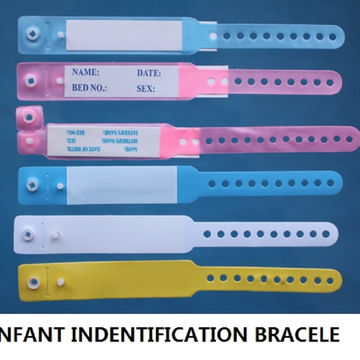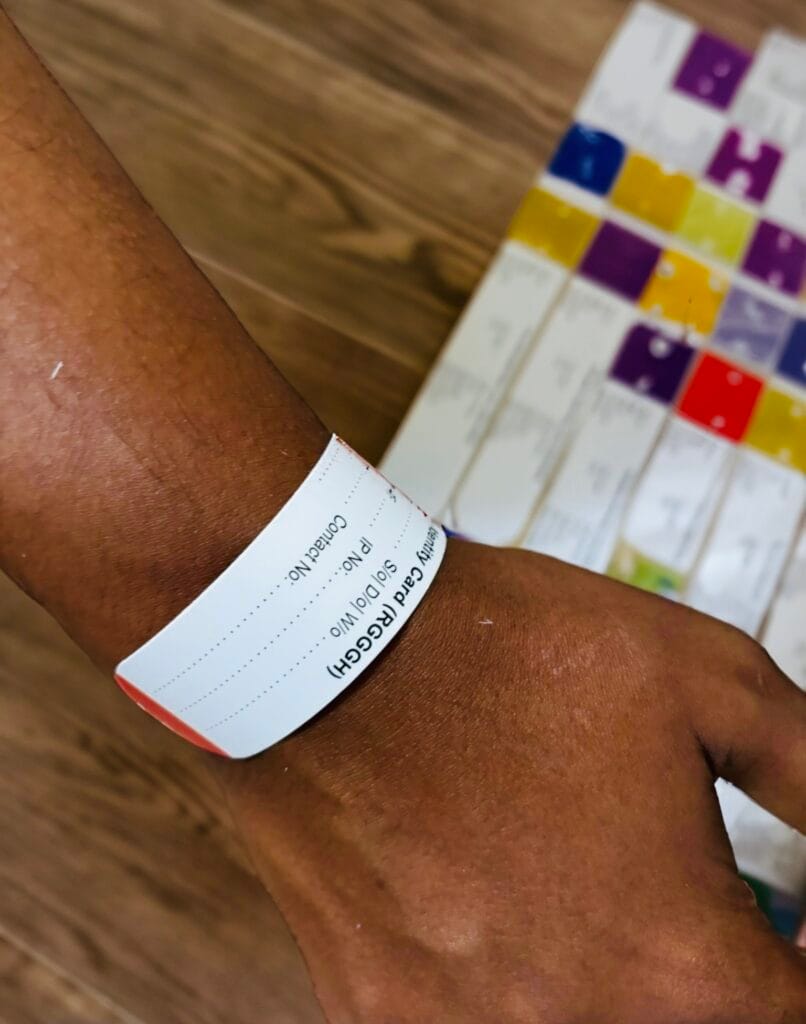How Patient Identification Band Enhances the General Patient Experience in Healthcare Facilities
How Patient Identification Band Enhances the General Patient Experience in Healthcare Facilities
Blog Article
Streamlining Individual Treatment With Reliable Identification Bands
The application of effective recognition bands is a crucial aspect in enhancing individual treatment within medical care settings. These bands not just serve to minimize the dangers associated with person misidentification but additionally improve interaction among medical employees, thereby fostering a much safer environment. Different kinds of identification bands deal with specific requirements, from resilient wristbands for adults to specialized bands for babies and vital instances. As the landscape of client identification evolves, one have to consider the ramifications of these systems on total health care shipment and individual outcomes. What technologies await in this vital location?
Importance of Client Identification
Ensuring exact person identification is crucial in healthcare setups, as it directly affects the safety and top quality of care provided. Misidentification can bring about serious errors, including carrying out the incorrect medicine, executing incorrect treatments, or miscommunicating crucial individual info. Such errors not only threaten individual safety however can additionally cause lawful ramifications and decreased rely on healthcare systems.
Reliable individual recognition is basic to developing a protected environment where patients receive proper and customized treatment. It helps with the accurate documents of clinical backgrounds, allergic reactions, and therapy plans, making sure that healthcare service providers have accessibility to essential information at all times. Robust identification protocols help streamline interaction amongst medical team, boosting partnership and decreasing the threat of blunders.

Kinds of Recognition Bands
Identification bands play a vital duty in keeping accurate individual documents and enhancing safety and security within medical care settings. Various sorts of recognition bands are made use of to deal with the particular requirements and demands of various client populations.

An additional kind is the ankle joint band, which is particularly valuable for infants and infants, making sure that identification continues to be intact also during treatment procedures. Specialized bands, such as those for allergy alerts or drop risk indicators, give additional layers of safety and security by drawing prompt interest to crucial person conditions.
Just recently, digital identification bands have acquired appeal, incorporating barcodes or RFID innovation that can be checked to promptly fetch person information. These bands streamline workflows and lessen the risk of human error during person identification processes.
Benefits of Effective Identification
Efficient identification of individuals via the usage of recognition bands adds dramatically to overall client security and care high quality. By guaranteeing that each individual is properly identified, doctor can properly match clinical therapies and treatments to the right individual, reducing the danger of mistakes. This is particularly vital in atmospheres with high client turnover, where the possibility for misidentification is better.
Furthermore, reliable recognition bands boost interaction among medical care groups. Clear and exact individual recognition look at here now cultivates cooperation and makes sure that all staff member are conscious of an individual's details demands and case history. This interaction is important for supplying coordinated care, especially in emergency scenarios where time is important.

Inevitably, effective identification through making use of identification bands not just safeguards people yet likewise advertises a society of security within medical care centers (Patient Identification Band). By prioritizing accurate recognition, medical care companies can enhance end results and boost the total client experience
Implementing Identification Systems
While the importance of individual recognition is well identified, the implementation of durable recognition systems presents a complex obstacle for healthcare organizations. Developing efficient identification systems calls for a comprehensive approach, incorporating innovation, personnel training, and procedure assimilation.
First, organizations must pick proper identification technologies, such as barcode scanning, RFID, or biometric systems. Patient Identification Band. These modern technologies need to be evaluated based on expense, usability, and compatibility with existing framework. A pilot program can assist recognize potential problems before major application
Following, extensive training for staff is important. All employees should recognize the value of accurate individual recognition and excel in the use of the selected technologies. Regular training updates and assessments can reinforce best techniques and make certain ongoing conformity.
Furthermore, medical care organizations should develop standardized procedures for patient identification across all divisions, enhancing and reducing discrepancies communication. Normal anchor audits can help identify gaps in adherence to these methods.

Eventually, a reliable application of identification systems not just boosts patient security but additionally fosters a culture of accountability and diligence within health care settings, making sure regular and trusted person treatment.
Future Trends in Individual Identification
Improvements in technology are set to transform patient identification practices in medical care settings. The assimilation of biometric recognition methods, such as fingerprinting and facial recognition, is expected to boost accuracy and safety and security. These technologies can considerably minimize the threat of misidentification, guaranteeing that individuals obtain the appropriate treatments and medicines.
Furthermore, the execution of blockchain innovation for patient documents is getting traction. This decentralized strategy can give a tamper-proof and safe method for taking care of client identifications, thereby improving accessibility to vital information throughout various doctor.
Another fad is the increasing use mobile health and wellness applications that utilize QR codes for client recognition. These applications enable real-time updates and very easy access to patient data, empowering medical care professionals to make enlightened choices promptly.
In addition, expert system (AI) is poised to play an essential role in analyzing individual recognition data, determining patterns, and forecasting potential recognition errors prior to they happen.
As these technologies evolve, they assure not only to boost client security however likewise to boost the overall performance of medical care delivery systems. Embracing these developments will certainly be critical for future-proofing patient care methods.
Conclusion
Finally, effective identification bands are necessary for enhancing client safety and security and care quality within healthcare setups. By reducing the risks connected with misidentification, these bands help with timely and exact information retrieval, ultimately enhancing interaction among health care companies. The implementation of durable recognition systems not just promotes a culture of security however additionally placements medical care institutions to adjust to future fads in individual identification modern technology, making certain optimal results for clients in varied professional settings.
As the landscape of client identification advances, one have to take into consideration the implications of Homepage these systems on general medical care distribution and patient end results.Efficient client identification is basic to establishing a safe setting where clients receive customized and appropriate treatment. Ultimately, focusing on efficient person recognition methods not just fosters a society of security yet additionally adds to improved individual end results and general satisfaction with medical care services.
Efficient recognition of clients via the usage of recognition bands contributes dramatically to general person safety and security and care high quality. The execution of robust identification systems not only cultivates a culture of security yet also settings healthcare organizations to adjust to future trends in client recognition technology, making sure optimal outcomes for clients in varied professional environments.
Report this page